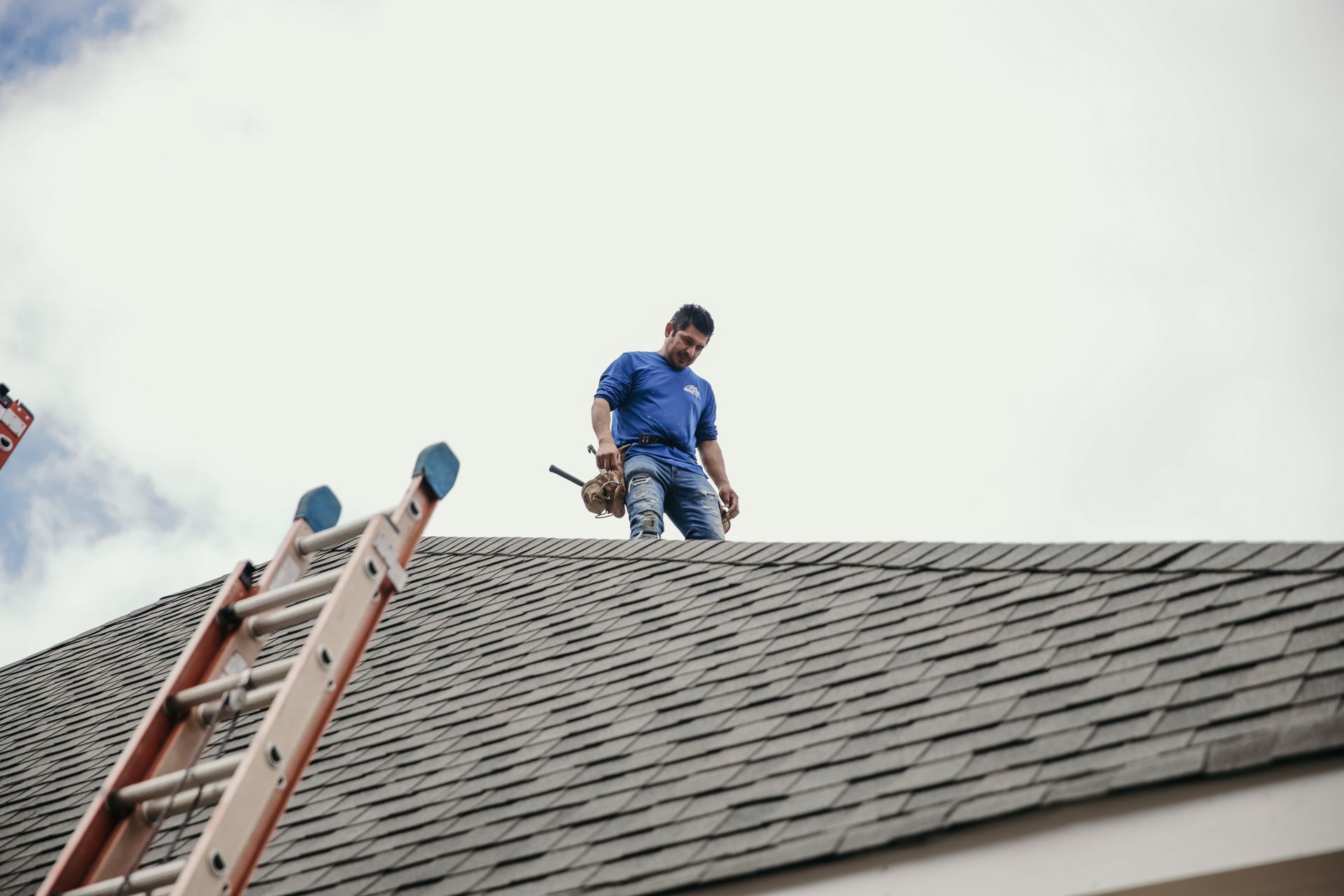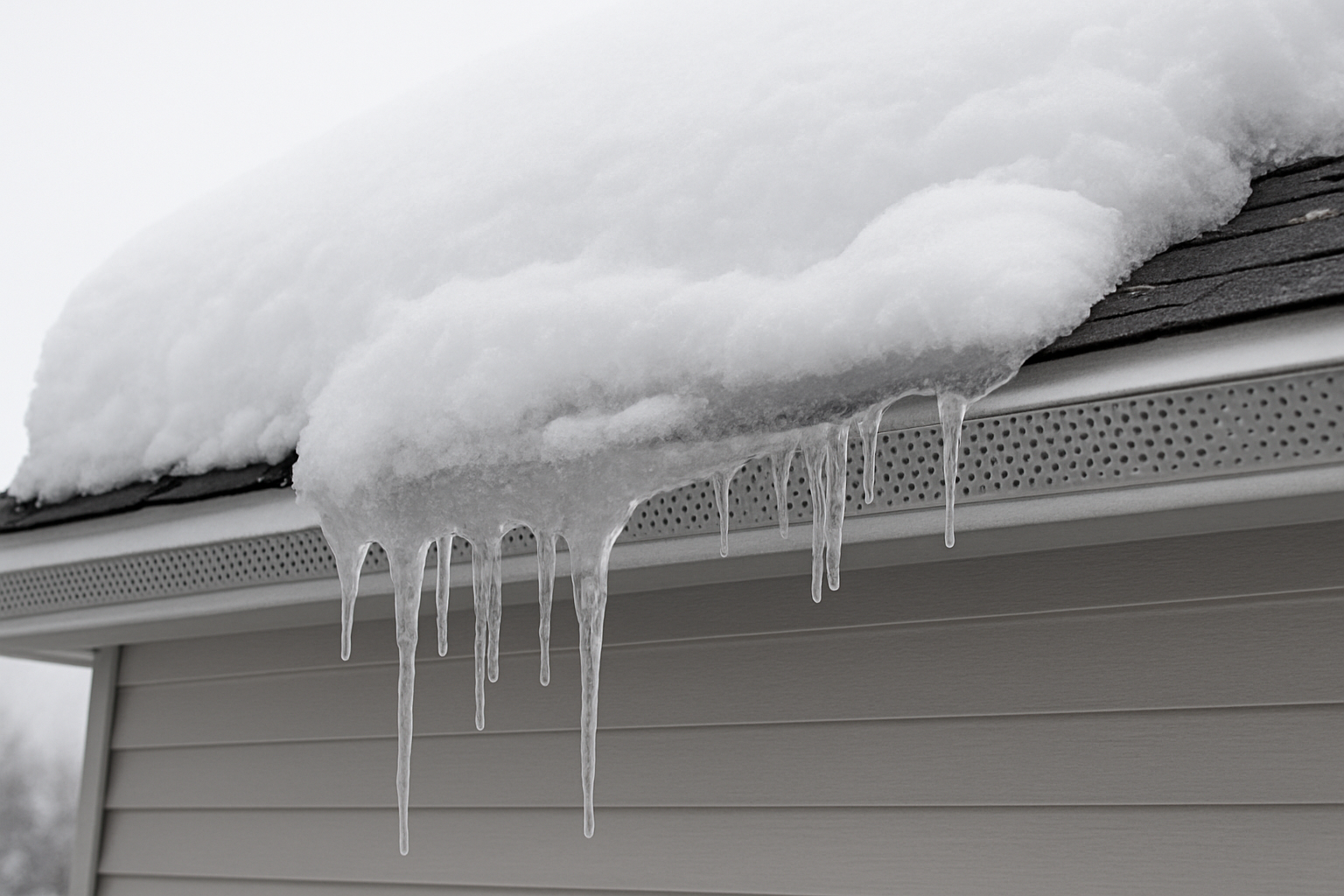How Many Downspouts Do I Need for My Gutter System?
It’s a simple question with big consequences: how many downspouts do I need to protect my home? If you've ever dealt with overflow, soggy landscaping, or a suspicious puddle near your foundation, you're not alone. Gutters and downspouts might seem like a boring part of your house, but they’re quietly doing the heavy lifting—moving gallons of water away from your home during every rainstorm.
This guide breaks down everything from gutter downspout size to drainage area and rainfall intensity so you can confidently install the right system. Whether you’re upgrading your gutter system, starting a new gutter installation, or just trying to avoid water damage, you’re in the right place.
Key Takeaways
- As a general rule, use one downspout every 40 feet of gutter, but adjust based on roof pitch, rainfall intensity, and gutter size.
- The right downspout size and placement help keep your home safe from water damage.
- Homes with higher square footage, steeper rooflines, or heavy rainfall may need more downspouts.
- Don’t overlook your local drainage area and gutter capacity—they directly affect how many downspouts you need.
- If unsure, consult gutter professionals or a trusted
gutter installation company to avoid improper drainage.
Why Downspouts Matter for Every Gutter System
Your gutter system doesn’t stop at the roofline. Once gutters direct the water runoff, it’s the downspout’s job to carry that water away from the foundation. Without enough downspouts, even the best gutter will overflow. That means water dripping in all the wrong places and possibly creeping into the crawlspace.
Proper downspout placement is crucial. One poorly placed gutter downspout can send water away from your house—or straight into your basement. The more you understand about your home’s drainage, the better you can design a reliable gutter system.
How Many Downspouts Do I Need, Really?
Let’s get to the heart of it: how many downspouts do I need? A good rule of thumb is one downspout every 40 feet of gutter. But that’s just a starting point.
If you live in an area with heavy rainfall, you may need additional downspouts. Likewise, if your roof pitch is steep, water will flow faster, and your gutters will need more downspouts to handle the volume of water safely. It’s not just about linear feet of gutter—you need to consider the total square footage of your roof and where the water’s flowing.
What Affects the Number of Downspouts You Need?
Several factors play into this:
- Roof pitch – Steeper roofs send more water down faster.
- Rainfall intensity – Measured in inches per hour, this tells you how hard it pours in your region.
- Drainage area – The total square foot surface that directs water into a single gutter run.
- Size of the gutters – Larger gutters can hold more water, possibly reducing the need for more downspouts.
- Downspout size – Larger round downspouts or rectangular downspouts can handle more volume of water than smaller ones.
So, knowing how many downspouts you need isn’t just about guessing—it’s about doing a little math and understanding your local conditions.
How to Calculate the Right Number of Downspouts
To calculate it, divide your drainage area by 600 to 800 square feet per downspout for moderate rainfall. Lower that number if your home experiences heavy rainfall. You might also consider gutter capacity and drainage speed.
Also, if you’re running 40 feet of gutter, it’s usually safe to place one downspout every 40 feet—but again, that depends on other variables. If you're still unsure, gutter professionals can help you calculate the correct number of downspouts based on your roof pitch and rainfall intensity.
What Is the Right Downspout Size?
The gutter downspout size matters. If the downspout is a pipe that’s too small, it can’t handle all the water, leading to overflow. Common sizes include:
- 2"x3" rectangular downspouts – Best for smaller gutter systems or low rainfall
- 3"x4" rectangular downspouts – A better fit for homes with larger gutters
- Round downspouts are often used with half-round gutters, and sizing varies by region.
Choosing the right downspout size helps with proper gutter drainage, especially in areas with intense storms. If you want your downspouts to last, make sure the system is balanced for your water volume.
What’s the Best Downspout Placement?
Downspouts must be placed at the lowest points of your gutter run, so gravity helps move water away from your home. In most cases, you’ll want downspouts at both ends of a 40-foot section. If the roofline funnels a lot of water to one end, you may need to place multiple downspouts on that side to prevent overflow.
Pay attention to the feet between downspouts. If they’re too far apart, you risk water building up and spilling over during heavy rain. And don’t forget: it’s possible to install downspouts on corners or in the middle of long gutter runs if needed.
Do You Need Downspout Extensions?
Absolutely. Once water leaves the gutter downspout, you still need to get it away from the foundation. A downspout extension is a simple solution that moves the water away from your home and into a safe runoff zone.
Extensions are crucial if your home’s foundation has poor grading or if you live in an area with expansive soil. They can be flexible or rigid and come in several lengths, giving you control over your drainage path.
Gutter Guards and Their Role in Downspout Efficiency
Gutter guards don’t just reduce maintenance—they help maintain consistent gutter drainage. If leaves and debris block the gutter and downspout, you’ll see water spill over the sides and right back toward your home.
By installing gutter guards, you keep the gutter downspouts clear and reduce the chances of overflow, which helps preserve your landscaping and prevents water damage. Choose gutter guards that match your gutter size and are compatible with your system.
What’s the Impact of Gutter Type on Downspouts?
Different types of gutters carry different volumes. For example:
- K-style gutters are the most common and hold more water than half-round styles.
- Commercial gutters are built for high-volume flow and often come with oversized downspouts.
Your standard gutter may not be up to the task if you’ve upgraded your roof or added square footage. Upgrading to larger gutters or changing the style of gutters might be needed before you even touch your downspout count.
When Should You Call the Pros?
If your gutters are constantly overflowing, your lawn is eroding, or your basement has moisture, it’s time to call a gutter installation company. While it’s possible to install downspouts on your own, calculating the right gutter and downspout setup for your home’s square footage and rainfall intensity often takes experience.
Don’t guess and end up with water damage. Let gutter professionals do the work so you can have peace of mind, especially during the next storm.
Frequently Asked Questions
How many downspouts do I need for 100 feet of gutter?
Most systems follow the “one downspout every 40 feet” rule. For 100 feet, you’ll likely need at least three downspouts, depending on rainfall intensity and roof pitch.
Can I use one downspout for multiple gutter sections?
Yes, but it depends on the volume of water and the gutter capacity. You must ensure the gutter downspout can handle the total drainage area without overflow.
What if my gutters still overflow?
You may need more downspouts, a larger gutter size, or gutter guards. Also, check for clogs or poor downspout placement.
Are downspouts available in different styles?
Yes. Round downspouts and rectangular downspouts are common. They come in multiple sizes and materials to fit your gutter system and match your exterior design.
Conclusion
Determining how many downspouts you need is more than a guess—it’s a key part of protecting your home from water damage. From gutter downspout size to drainage area, every piece of your system matters. Whether you’re working with K-style gutters, gutter guards, or oversized commercial gutters, one thing’s for sure: the right plan today saves big headaches tomorrow.
If you’re unsure how many downspouts you need or want to upgrade your gutter system, our team can help with accurate installation and smart design. Avoid costly mistakes—get in touch now for a fast quote, no hidden fees, and a hassle-free experience. Let’s keep your home dry, strong, and protected all year long.





